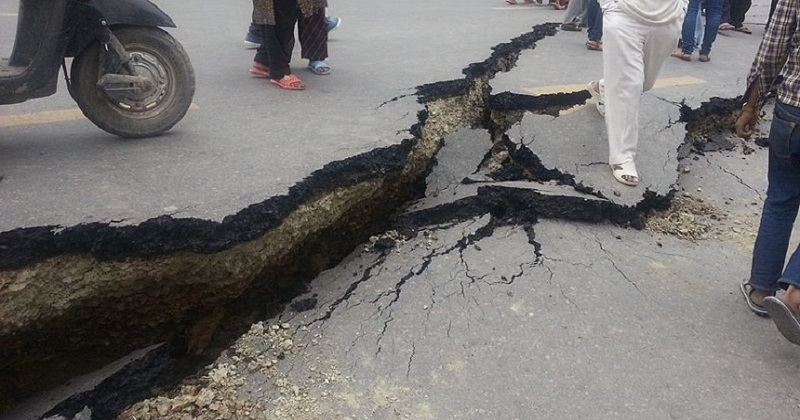
Commemorating a national disaster, such as the 2015 earthquakes, is an opportunity to mourn the deaths of fellow citizens while also considering ways to avoid similar humanitarian situations in the future. As we approach the 7th anniversary of the earthquake for the first time since post-earthquake rehabilitation was completed, the topic of safeguarding lives and infrastructure from future disasters becomes even more pressing.
Let us go back to April 25, 2015. Schools and workplaces were closed because it was a Saturday. Most individuals were outside their homes by midday. The rain hadn’t arrived yet, and the ground was dry. Hundreds of thousands of pupils would have been inside their classrooms if it hadn’t been a Saturday. Most of us would have been fast asleep if it had been midnight.
Worse, if the 2015 earthquake occurred during a monsoon rain, urgent and large-scale rescue and relief efforts would have been nearly impossible. Thousands of survivors might have been left stranded for days in Sindhupalchok villages where over 3,000 people were murdered. We were quite fortunate that the earthquake occurred on a weekend. Nonetheless, it killed approximately 9,000 lives and wounded over 22,000 people. The quake also destroyed private homes, governmental buildings, schools, health facilities, historical monuments, and other essential infrastructure in as many as 32 districts, resulting in a $9 billion economic loss.

Thousands of earthquake-displaced families endured the monsoons and winters in temporary shelters. In makeshift learning centres, children continued their studies. It was difficult to envisage Nepal completing such a vast restoration effort within a five-plus-one-year time frame. To be true, the post-earthquake reconstruction process was sluggish at first. However, the National Restoration Authority (NRA) performed an admirable job in establishing structures, norms, and processes for granting subsidies for private housing reconstruction.
It developed the Post-Disaster Reconstruction Framework, which identified priority sectors and finance requirements. The NRA collaborated with several government agencies, development partners, the corporate sector, and communities to reconstruct schools, health facilities, historical sites, and other public infrastructure. The NRA has offered a good example of planned and methodical reconstruction within a short time frame. Despite the Covid-19 crisis that followed, it was able to serve as a model. Now that the NRA has been disbanded, its remaining responsibilities have been transferred to the National Disaster Risk Reduction and Management Authority (NDRRMA).
The establishment of the NDRRMA represents a paradigm shift in Nepal’s approach to disaster risk management, shifting from a focus on reaction to a focus on risk knowledge, enhanced governance, funding, and readiness for a successful response, recovery, and rebuilding. The NDRRMA has assumed not just the NRA’s remaining repair duty, but also the mission to enhance resilience during future catastrophes. We appear to have a short-term memory as a nation. We often forget how close we were to death only a few years ago. On this day seven years ago, a lot of things could have gone wrong. Because of a few fortuitous circumstances, the 2015 earthquake was not as catastrophic as it could have been. We might not be as fortunate the next time.
We face several pressing challenges, including strict adherence to building codes, the implementation of insurance instruments for our homes and public property, the training of human resources for post-disaster rescue operations, and the establishment of effective multi-hazard early warning systems, and massive safety and preparedness campaigns. Our local governments have designated disaster risk management jurisdictions. Building rules, however, are only being adopted in a few metropolitan towns. These laws must also be carefully enforced in rural municipalities. Building codes must be followed not just to receive bank loans, but also to save our lives.
We have built over 800,000 earthquake-resistant dwellings as part of the post-earthquake rehabilitation operation. We’ve also erected almost 7,000 earthquake-resistant schools, 750 healthcare institutions, and 650 government structures. The huge size of earthquake-safe structural development has boosted seismic resistance in 32 areas hit by the 2015 earthquakes. However, another massive earthquake might strike other sections of the nation where most structures are not earthquake-proof and could fall quickly.
Western Nepal has not been jolted by a major earthquake in 500 years, and sufficient tectonic pressure has built up beneath this region. Because of the region’s inadequate execution of construction rules, an earthquake as severe as the 2015 quake might be even more devastating. A crisis teaches us important lessons that will help us prepare for future disasters. But the 2015 earthquake taught us the incorrect lesson. We mistakenly concluded that concrete dwellings are stronger and safer when we witnessed mud-mortar houses falling in numerous historic towns while concrete constructions remained intact.
Only a properly constructed concrete home can endure a massive earthquake. A mud mortar home can be as robust as a brick structure if it has enough horizontal and vertical bands. As a result, if another massive earthquake strikes towns like Kathmandu, we might expect to see more concrete homes collapse. In preparation, we are purchasing concrete cutting machines as well as collapsed structural search and rescue equipment. Now that we have completed the post-earthquake rehabilitation and reconstruction, we must turn our attention to constructing a more resilient Nepal. This is conceivable, but only if we change our comfortable thinking and prepare for another massive earthquake at any time. Even while reading this essay.

Post Your Comments